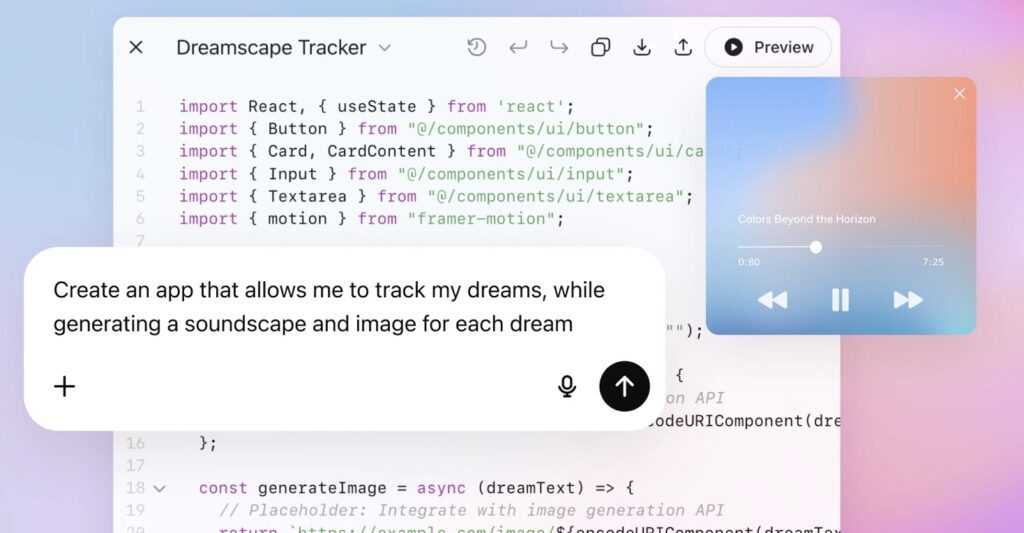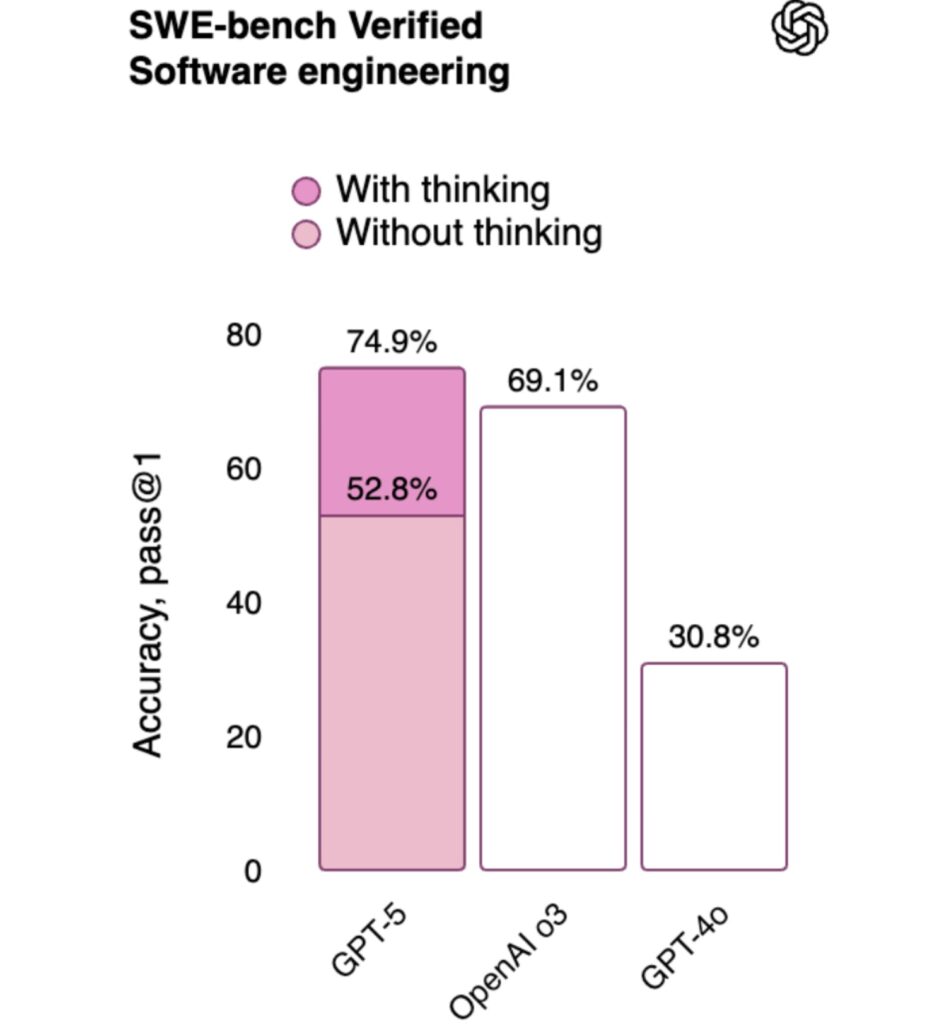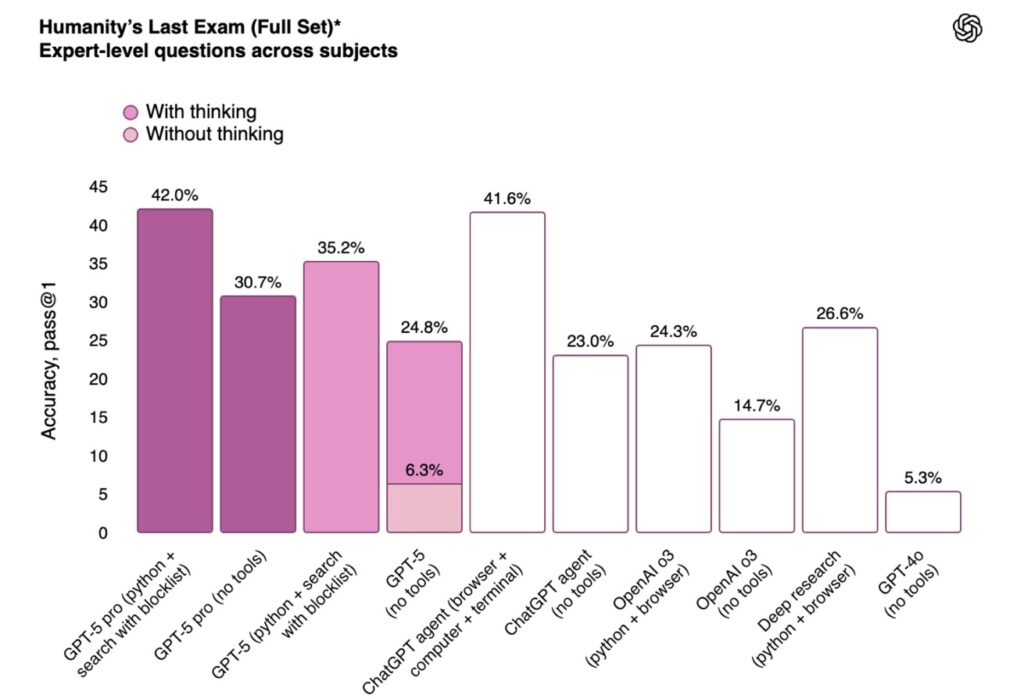OpenAI’s Bold Move Makes Cutting-Edge AI Accessible to Billions, With Smarter Reasoning, Fewer Errors, and Tiered Access That Changes Everything
- Mass Accessibility with a Twist: GPT-5 is now the default model for all ChatGPT users, including free accounts, democratizing advanced AI but enforcing strict usage limits to manage demand.
- Performance Boosts Across the Board: This unified AI system excels in reasoning, coding, and multimodal tasks, reducing factual errors by up to 80% while introducing “safe completions” for sensitive queries.
- Broader Implications for AI’s Future: Amid fierce competition, OpenAI’s rollout includes developer tools, interface upgrades, and a focus on real-world utility, signaling a shift toward affordable, everyday AI for over a billion people.

OpenAI‘s latest bombshell, GPT-5, dropped like a thunderclap at a packed press event on Thursday, promising to reshape how we interact with artificial intelligence. Forget the days when top-tier AI was locked behind paywalls—GPT-5 is rolling out for free to anyone with a ChatGPT account, a move CEO Sam Altman hailed as a push for “real-world utility and mass accessibility.” Altman emphasized on X that while even smarter models are on the horizon, GPT-5 is designed to benefit over a billion people, many of whom have only experienced predecessors like GPT-4o. This isn’t just an upgrade; it’s a statement about making AI as ubiquitous as smartphones, though with clever safeguards to prevent overload.
At its core, GPT-5 is a multimodal powerhouse, handling text, images, voice, and more with unprecedented finesse. It adapts dynamically to prompts, opting for quick responses on simple queries or deeper “thinking” for complex ones—think breaking down intricate problems step by step to boost accuracy. OpenAI claims it’s their “smartest model yet,” with standout improvements in coding (scoring 74.9% on SWE-bench Verified and 88% on Aider Polyglot) and reasoning, achieving 94.6% on AIME 2025 math benchmarks without tools. For health queries, it scores 46.2% on HealthBench Hard, helping users decode medical results or prep questions for doctors—though OpenAI wisely reminds everyone it’s no substitute for professionals. Compared to past leaps like GPT-3 to GPT-4, this feels like a refined evolution, building on intermediates like GPT-4o and o3, but the “GPT-5” branding alone is a marketing win in a crowded field.

One of the most exciting aspects is the reduction in “confabulations”—those pesky AI hallucinations where models spit out plausible but wrong info. With web search enabled, GPT-5 cuts factual errors by 45% over GPT-4o, and in “thinking” mode, it’s up to 80% better than o3. Long-form content sees even fewer slip-ups, about six times less than before. OpenAI’s new “safe completions” approach is a game-changer too: instead of flat-out refusing sensitive requests, the model offers helpful responses within safety bounds, explaining limits when needed. They’ve also dialed back sycophancy—those overly agreeable replies—from 14.5% to under 6%, aiming to curb the manic or delusional vibes some users reported with earlier versions. It’s all part of a broader effort to make AI more reliable and user-friendly, especially as it integrates with tools like web search, data analysis, image generation, and even Gmail or Google Calendar for Pro users.
But free doesn’t mean unlimited, and OpenAI’s tiered limits ensure the system doesn’t buckle under demand. Free users get up to 10 messages every 5 hours on GPT-5, switching to the lighter GPT-5 mini afterward, with just one “thinking” message per day. ChatGPT Plus subscribers fare better: 80 messages every 3 hours on GPT-5 and 200 “thinking” messages weekly. Pro and Team tiers enjoy unlimited access, though with abuse guardrails—no data scraping, account sharing, or reselling. Automatic switches to “thinking” mode don’t count against limits, and existing chats seamlessly migrate: conversations from GPT-4o or similar shift to GPT-5, while o3 chats go to GPT-5 Thinking. Pro users get the exclusive GPT-5 Pro variant, replacing o3-pro. The model picker simplifies too—Free and Plus users see only GPT-5 and GPT-5 Thinking, while higher tiers retain legacy options.
The rollout isn’t instantaneous; it’s phased, starting with mobile apps and expanding to web and iPad. Enterprise and Edu users wait a week, and Standard Voice Mode retires in 30 days for the unified Advanced Voice, which adapts speaking styles on the fly. ChatGPT’s interface gets fun tweaks like customizable colors and “personalities” (e.g., Cynic, Robot, or Nerd) that tweak the AI’s vibe. All familiar tools carry over: web search, data analysis, image and file analysis, Canvas, memory, and custom instructions. It’s a comprehensive ecosystem, unifying capabilities into what OpenAI calls a “unified system” with variants like GPT-5 mini and nano for efficiency.

From a broader lens, GPT-5 underscores OpenAI’s strategy in a hyper-competitive AI landscape, facing off against Google’s Gemini, Anthropic’s Claude, and Meta’s Llama. With 700 million weekly users, 5 million paying businesses, and 4 million developers, OpenAI is betting on volume and accessibility to stay ahead. Developers get a treat too: API access to gpt-5, mini, and nano with a 256K token context window, priced at $1.25/$10 per million input/output tokens for the flagship (with caching discounts). New features like free-form function calling, verbosity controls, and reasoning toggles make it developer-friendly, though larger contexts still rely on GPT-4.1’s million-token capacity.
Yet, this launch isn’t without caveats. While GPT-5 promises fewer errors and better utility, remember AI’s predictive nature—it fills knowledge gaps with engaging guesses, so always verify outputs. OpenAI’s focus on “safe completions” and abuse prevention shows maturity, addressing past controversies like sycophancy or over-flattery. In an era where AI influences everything from coding to healthcare, GPT-5 could accelerate adoption, but it also raises questions about equity: will limits frustrate free users, or drive upgrades? As Altman puts it, this is about benefiting billions, not just elites. We’ve only scratched the surface in testing, but early signs point to a model that’s not revolutionary in isolation—yet profoundly impactful in its reach.
GPT-5 might herald a new phase where AI becomes truly everyday, embedded in work, education, and play. OpenAI’s commitment to affordability could pressure rivals to follow suit, potentially sparking an AI arms race focused on accessibility rather than raw power. For now, if you’re a ChatGPT user, log in and give it a spin—just keep an eye on those limits. The future of AI just got a whole lot more inclusive, and that’s something worth celebrating.
